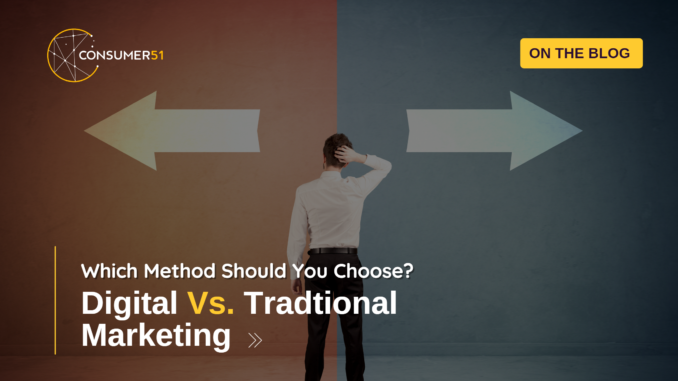
Marketing is an essential aspect of any business, and with the rise of technology, digital marketing has become increasingly popular. But does that mean traditional marketing methods are becoming obsolete? The ease and flexibility of digital marketing efforts have made it a go-to for many businesses. However, traditional marketing methods like billboards, radio ads, and print media still have their place. Let’s dive into the benefits of both so that you can find the mix that’s best for your business.
Benefits of Digital Marketing
Digital marketing services encompass strategies and tactics that leverage digital channels to reach and engage potential customers. This form of marketing revolves around online platforms such as websites, search engines, social media, email, mobile apps, and more. Here are some positively unique aspects of digital marketing:
Targeted Audience Reach
The ability to directly target your audience has changed the marketing game. Digital marketing allows businesses to connect their messaging to specific demographics, interests, and behaviors, enabling precise audience segmentation and helping the right eyes to see the right message. Once you find that audience, digital marketing allows businesses to have two-way communication building both trust and customer loyalty.
Measurable Results
One of the significant advantages of digital marketing is the ability to measure and track campaign performance accurately. Marketers can leverage analytics tools to gain insights into website traffic, click-through rates, conversion rates, and return on investment (ROI).
Through proper analytics, you should be able to see the result of every dollar spent.
Cost-Effective
Compared to traditional advertising, digital marketing often offers a more cost-effective solution. `It provides businesses of all marketing budgets the opportunity to compete on a level(ish) playing field, as companies can tailor digital marketing campaigns and promotions to fit any budget.
Flexibility
One of the key differences of digital marketing is its agility. Unlike traditional marketing, where campaign changes can be time-consuming and costly, digital marketing strategies allow quick adjustments and A/B testing. Marketers can experiment with different ad formats, messaging, and targeting parameters in real-time, making data-driven decisions to optimize their campaigns on the fly.
Benefits of Traditional Marketing
Traditional marketing refers to conventional advertising and promotional methods used before digital technologies. It encompasses channels such as print media, television, radio commercials, billboards, direct mail, and telemarketing. Let’s explore some key characteristics of traditional marketing:
Broad Reach and Familiarity
Traditional marketing techniques have long-standing familiarity among consumers. Television ads, billboards, and print advertisements have been the primary means of reaching a broad audience before the digital era. Because of this traditional marketing often excels in reaching older demographics who are less tech-savvy or have limited access to digital platforms. This familiarity instills a sense of trust in the products and services being advertised.
Tangibility and Credibility
Physical advertisements, such as brochures or direct mail, offer a tangible presence that can create a lasting impression. Traditional marketing’s tactile nature can enhance brand credibility, as some consumers perceive digital advertising as less trustworthy due to concerns about privacy, security, and the “false news”. It can also reach audiences who are hesitant to use digital devices.
How to Find Your Mix:
When determining where to focus your resources, consider a couple of questions:
What is My Budget?
For businesses with limited resources, making the right choices becomes even more critical. In such cases, digital marketing often offers a cost-efficient solution with a higher potential return on investment. By leveraging paid ad campaigns, successful marketers can target specific audiences and maximize their advertising budgets by reaching only the most relevant consumers.
Where is My Audience?
Once you’ve completed an audience analysis and built outaudience personas, you should strongly understand the spaces they inhabit. Remember – it’s far easier to insert yourself into your audience’s conversation than to try to lure them into a new one. For example, if your target market consists of older demographics or operates in a niche industry where digital adoption is low, traditional marketing methods like direct mail, industry publications, or trade shows may still be effective. If your target market consists of digitally fluent teenagers, it could be best to skip the radio advertisements and go right to Snapchat. It’s crucial to thoroughly understand your audience to find the right marketing mix for your business.
In conclusion, the choice between digital and traditional marketing is not an either-or decision but a strategic blend of both approaches. The key lies in understanding your target audience, budget constraints, and business goals. By leveraging the strengths of each channel and measuring their effectiveness, businesses can create a comprehensive marketing strategy that maximizes reach, engagement, and conversions. Whether it’s the trust and authority of traditional marketing or the precision and data-driven insights of digital marketing, a well-executed integrated marketing approach is the key to success in today’s competitive landscape.

Leave a Reply